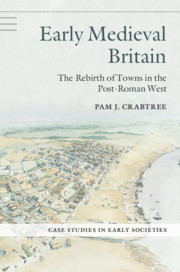Book contents
- Early Medieval Britain
- Case Studies in Early Societies
- Early Medieval Britain
- Copyright page
- Dedication
- Contents
- Figures
- Tables
- Preface
- Introduction
- 1 The End of Urbanism in Roman Britain
- 2 Early Anglo-Saxon England: Settlement, Society, and Culture
- 3 Middle Saxon Settlement and the Rise of the Emporia: The Archaeology of the Wics and Contemporary Sites
- 4 Towns in Late Anglo-Saxon England
- Conclusions
- Bibliography
- Index
- References
Bibliography
Published online by Cambridge University Press: 29 June 2018
- Early Medieval Britain
- Case Studies in Early Societies
- Early Medieval Britain
- Copyright page
- Dedication
- Contents
- Figures
- Tables
- Preface
- Introduction
- 1 The End of Urbanism in Roman Britain
- 2 Early Anglo-Saxon England: Settlement, Society, and Culture
- 3 Middle Saxon Settlement and the Rise of the Emporia: The Archaeology of the Wics and Contemporary Sites
- 4 Towns in Late Anglo-Saxon England
- Conclusions
- Bibliography
- Index
- References
- Type
- Chapter
- Information
- Early Medieval BritainThe Rebirth of Towns in the Post-Roman West, pp. 193 - 216Publisher: Cambridge University PressPrint publication year: 2018



